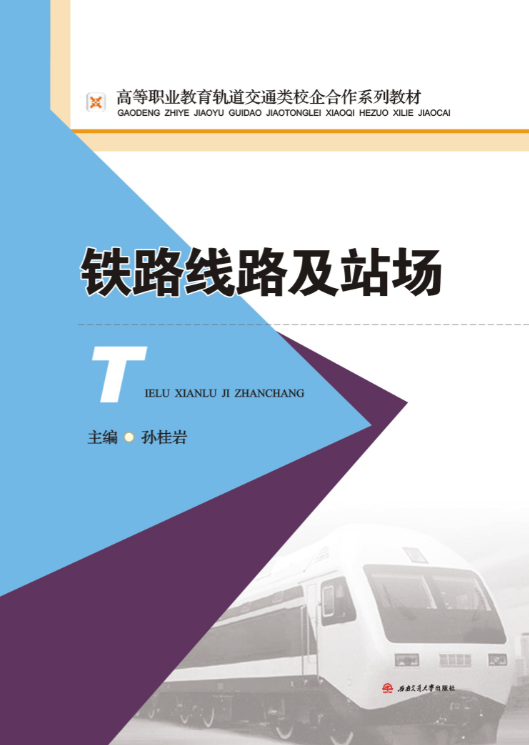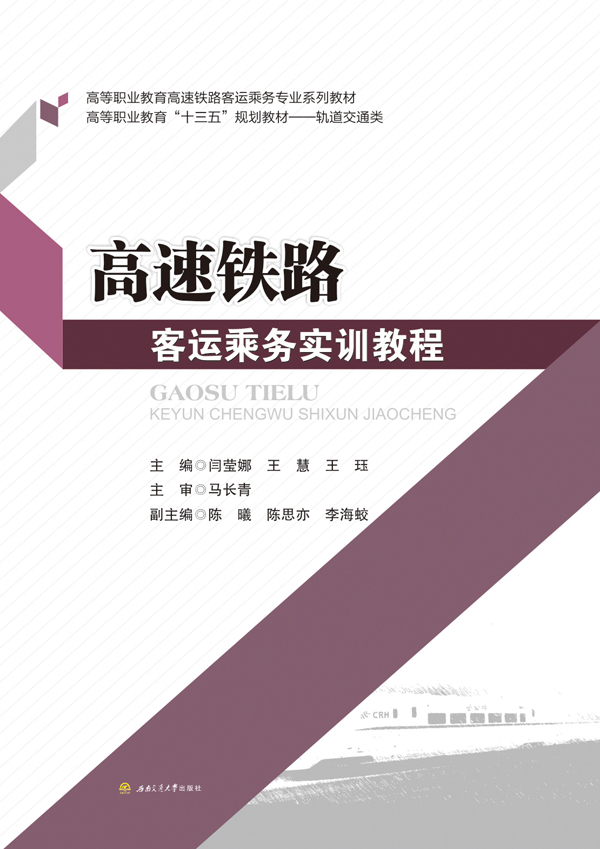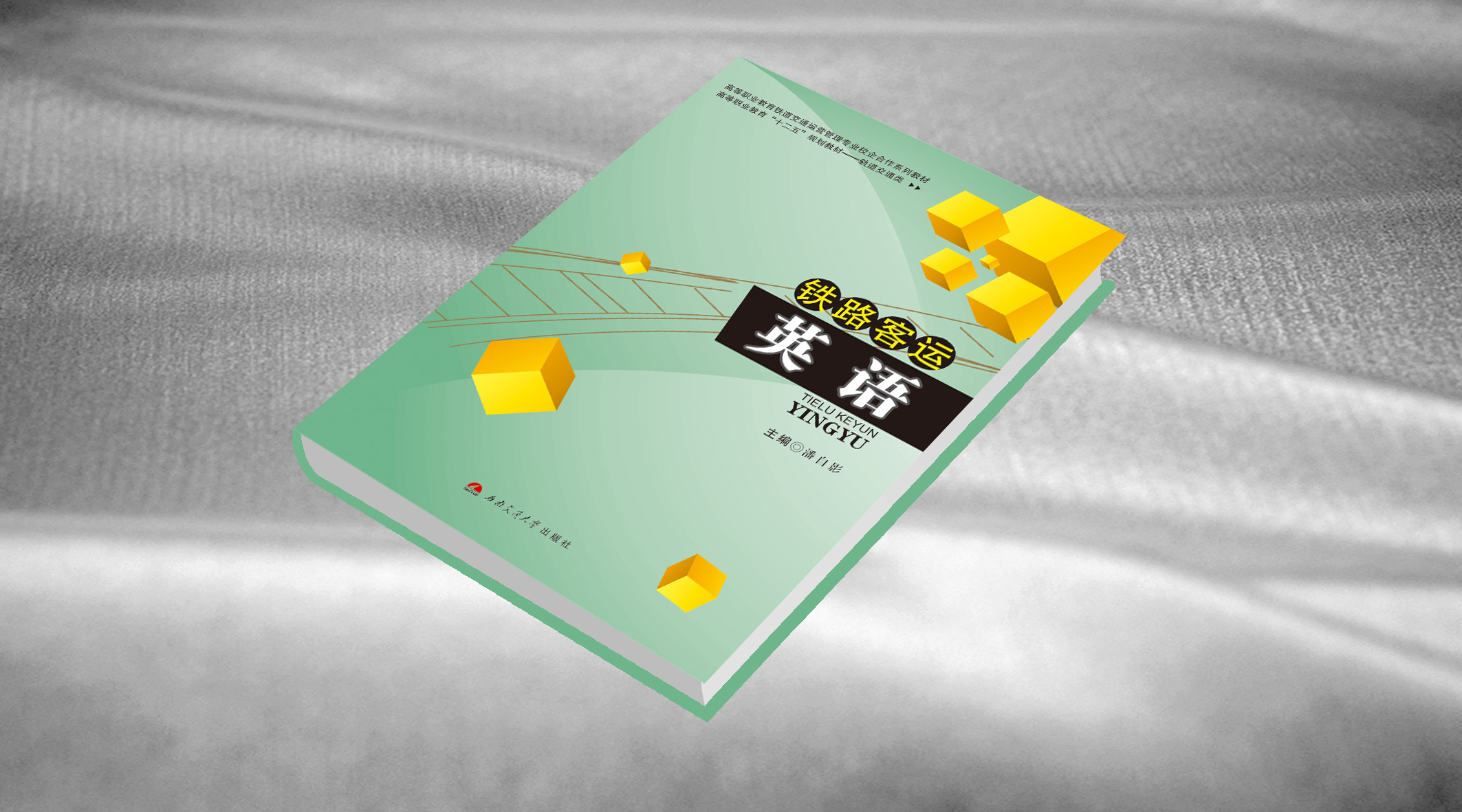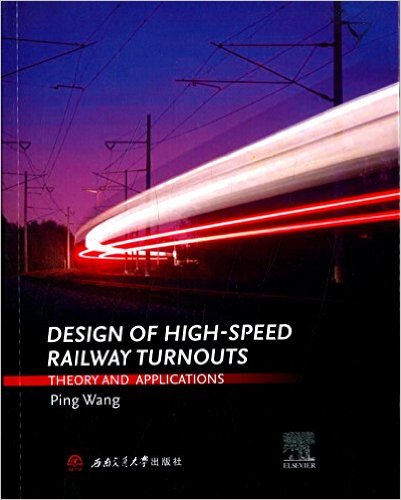-
 铁路线路及站场
铁路线路及站场作者:孙桂岩
“铁路线路及站场”是铁路及城市轨道交通运营管理专业学生学习的必修课程,任务是比较全面、系统地介绍铁路线路及站场的运输设备。本书结合现场实际,从打好基础出发,突出采用实图实例,注意新技术、新设备的引入,力求知识体系和能力体系共同体现,做到内容选材适当,文字通俗易懂,突出先进性、应用性和实践性,图文并茂,可读性强,又便于自学。本教材非常适合高职高专院校铁路及城市轨道交通运营管理专业学生使用。
-
 高速铁路客运乘务实训教程
高速铁路客运乘务实训教程作者:闫莹娜 王慧 王珏
本书是高速铁路客运乘务专业系列教材之一,内容涉及各类票价计算实训、各种乘车证处理实训、客运记录及铁路电报编制实训、动车组服务质量规范实训、重点及特殊重点旅客服务实训、动车客运乘务应急处理实训、铁路红十字救护实训、客伤处理实训、高铁快运实训及附录等内容,附录内容包括列车长、列车值班员、列车员、餐车长岗位职责。本书注重操作性,最大特色是模块化教学、实训操作性强、配备大量实训习题并附答案。既可作为学校教学使用,也可作为铁路员工培训使用。
-
 铁路客运英语
铁路客运英语作者:潘自影
当前,中国国际化水平不断提高,人们的服务意识、服务观念也在发生着变化。铁路作为相应的窗口单位,对铁路职工的客运服务能力提出了更高的要求,能够进行客运服务英语会话已是大势所趋。同时,当前的高等职业教育非常重视学生实际工作能力的培养。在此基础上,我们深入了解铁路企业用人需求以及客运涉外服务工作要求,精心编写了这本教材。
本书以培养学生的客运服务能力为本,打破传统教材编写模式,结合一线工作实际,以客运服务岗位工作项目为基础编写学习内容,进行任务教学。本书包括了车站服务工作、乘车服务工作以及观光旅游服务三个项目。每个项目都包含教学目标、典型对话、有用表达以及有关铁路介绍的课文。这些内容的安排,既突出了实践性,又遵循了学生的认知规律。
融入全新的教育理念和科学的教学方法,本教材在编写时主要突出实用性、系统性以及时代性。一是突出实用性。教材内容贴近实际,以铁路客运服务的实际工作为着眼点,使学生在循序渐近的训练中提升客运服务英语会话能力。二是突出系统性。教材内容根据实际工作流程进行设计和编写,循序渐近,具有系统性。三是突出时代性。教材所选内容紧贴时代发展要求,涵盖了当前铁路迅速发展的诸多方面的新内容,能够使学生在熟悉背景之下进行客运服务英语学习,既符合时代发展要求,又能激发学习热情,提升学习效果。
本书由潘自影担任主编,闫莹娜、陈曦担任副主编,李晓芳为主审。全书由潘自影统稿。在编写过程中,我们得到了天津铁道职业技术学院毕树林主任、沈农华主任、李增和老师、洪立新老师的大力支持,同时还得到了天津站客运车间王辉处长的大力帮助,在此深表感谢。
本书各单元的内容既相对独立又相互关联,适合作为铁道交通运营管理专业、高速铁路乘务专业的专业基础课教材,同时也可作为铁路行业的技能培训资料以及铁路企业管理人员和技术人员的参考用书。
在编写过程中,尽管我们做了很大努力,但由于编者水平有限,书中仍难免有疏漏之处,敬请广大读者不吝赐教。
编 者
2014年5月
图书分类
Book classification- 《高速铁路道岔设计理论与实践(英文)》出版标志著西南交通大学与世界著名出版商爱思唯尔联合实施的中国高铁学术出版“走出去”项目正式拉开帷幕。《高速铁路道岔设计理论与实践(英文)》由中国高速铁路道岔理论研究组组长王平主笔,通过分析中国高速铁路的运行实例,介绍具有中国自主知识产权的高铁道岔基础理论,高铁道岔的设计和维护。
- 《高速铁路道岔设计理论与实践(英文)》及时地将这些理论研究成果归纳总结,并呈现给大家,希望能对铁路道岔设计工作者有所帮助,继续推动我国道岔技术的发展。
-
Preface
CHAPTER 1 Types and Structure
1.1 Main Types
1.1.1 Composition
1.1.2 Classification
1.2 Technical Requirements
1.2.1 Excellent Technical Performance
1.2.2 Hi...查看更多 - Ping WANG
Professor of Civil Engineering at Southwest Jiaotong University, China; and Director of Key Laboratory of High-Speed Railway Engineering, Ministry of Education.
Professor W...查看更多





